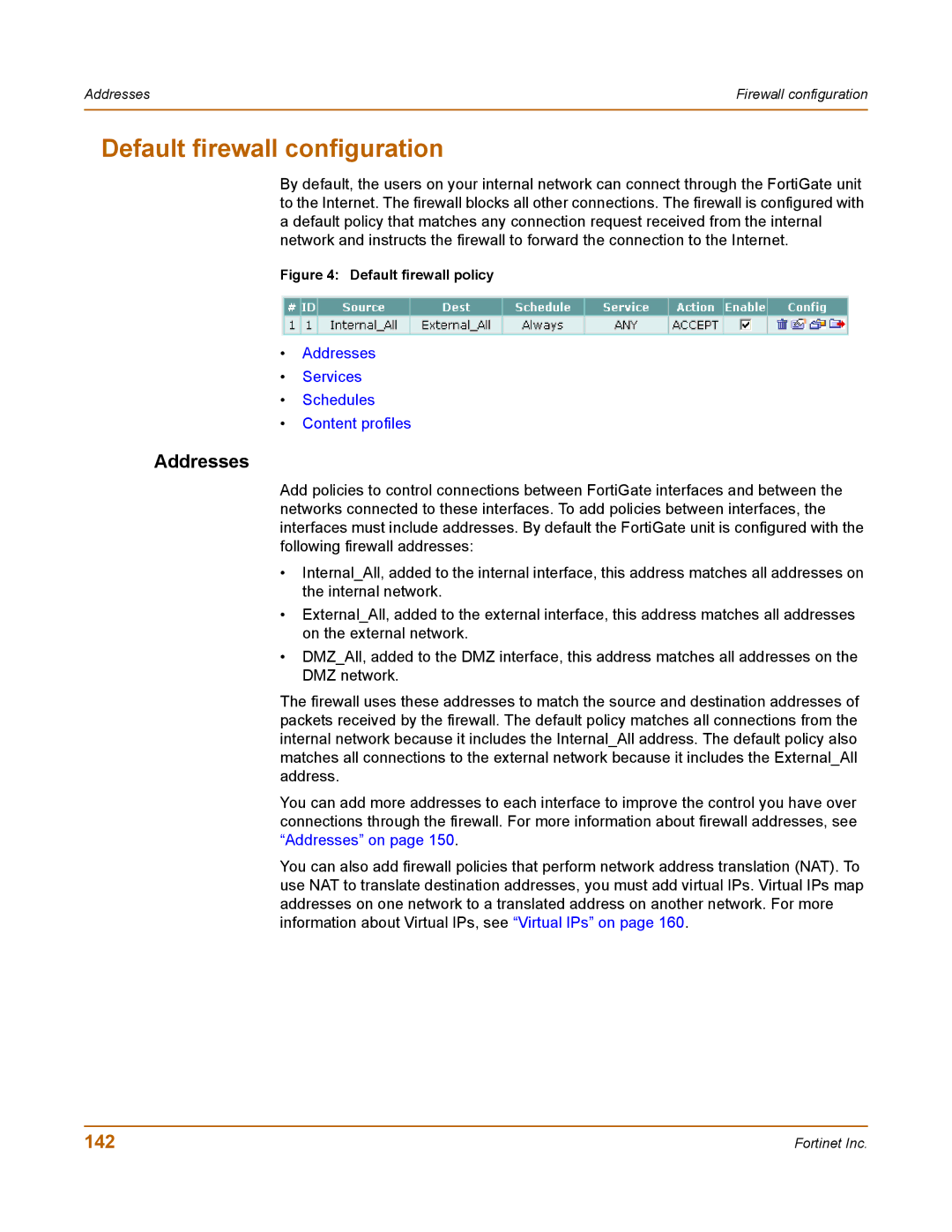
Addresses | Firewall configuration |
|
|
Default firewall configuration
By default, the users on your internal network can connect through the FortiGate unit to the Internet. The firewall blocks all other connections. The firewall is configured with a default policy that matches any connection request received from the internal network and instructs the firewall to forward the connection to the Internet.
Figure 4: Default firewall policy
•Addresses
•Services
•Schedules
•Content profiles
Addresses
Add policies to control connections between FortiGate interfaces and between the networks connected to these interfaces. To add policies between interfaces, the interfaces must include addresses. By default the FortiGate unit is configured with the following firewall addresses:
•Internal_All, added to the internal interface, this address matches all addresses on the internal network.
•External_All, added to the external interface, this address matches all addresses on the external network.
•DMZ_All, added to the DMZ interface, this address matches all addresses on the DMZ network.
The firewall uses these addresses to match the source and destination addresses of packets received by the firewall. The default policy matches all connections from the internal network because it includes the Internal_All address. The default policy also matches all connections to the external network because it includes the External_All address.
You can add more addresses to each interface to improve the control you have over connections through the firewall. For more information about firewall addresses, see “Addresses” on page 150.
You can also add firewall policies that perform network address translation (NAT). To use NAT to translate destination addresses, you must add virtual IPs. Virtual IPs map addresses on one network to a translated address on another network. For more information about Virtual IPs, see “Virtual IPs” on page 160.
142 | Fortinet Inc. |
